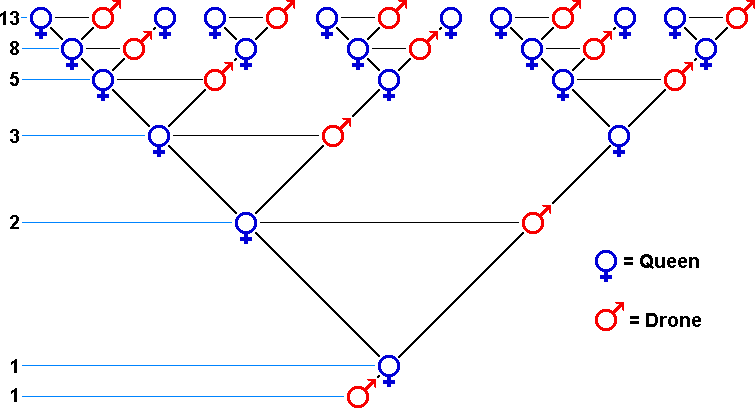Biology
Genetics
|
|
|
|---|
|
Biology Genetics |
Drone Parent Numbers, Fibonacci Sequence (Golden Mean) |
|---|
| Number of | Drones | Worker Bees |
|---|---|---|
| Parents | 1 | 2 |
| Grandparents | 2 | 3 |
| Great grandparents | 3 | 5 |
| Great-great grandparents | 5 | 8 |
| Great-great-great grandparents | 8 | 13 |

|
|---|
| The Golden Ratio is sometimes denoted by the Greek letter phi. |
|
|---|
Dave Cushman.
Page created 09/07/2004
Page updated 01/12/2022
Originated... 09 July 2004, |
|
|
|---|